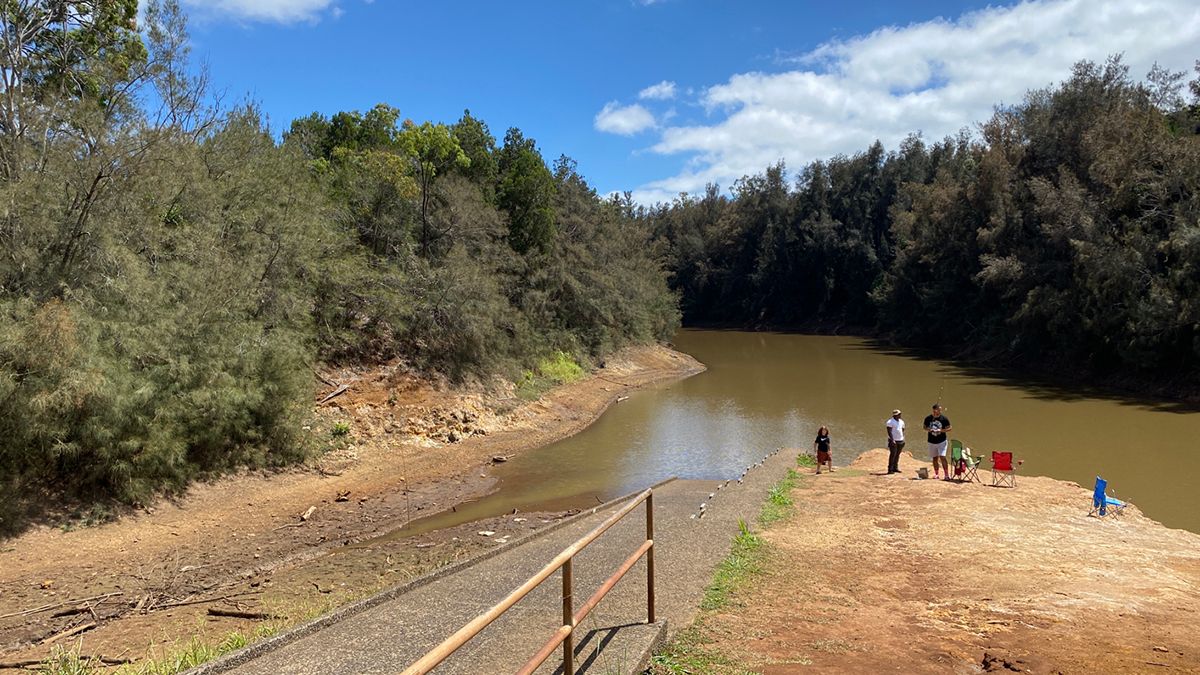HONOLULU — The Honolulu Board of Water Supply is asking residents and businesses to voluntarily reduce water use by 10% in order to prepare for the upcoming summer season. According to a BWS news release, the additional pumping from the BWS Beretania Wells to make up for the loss of supply from the Halawa, in addition to less than normal rainfall, is resulting in rising chlorine levels in the Beretania Wells.
The Halawa Shaft was shut down last year after numerous military housing residents complained about fuel odor in their tap water in November.
According to the BWS, chlorine levels are indicators of the health of island water sources; rising levels indicate stress. During this time of year when regular and usually plentiful rains recharge the islands’ aquifers, most of the state is experiencing drought conditions, according to the Dept. of Land and Natural Resources. The lack of rainfall prevents adequate recharge, and even if more rain were to come later in the year, the islands’ aquifers require time to rebuild storage capacity.
“We need to reduce overall island demand to protect our groundwater resources from depleting,” said BWS Manager and Chief Engineer Ernest Lau in a statement. “When we shut down our Halawa Shaft due to the Navy’s Red Hill crisis, we knew that having to ask for voluntary conservation was a possibility. We had hoped we could avoid this.
“Unfortunately, we are in a difficult situation not of our own making.”
A news release from the DLNR reported that “continuously monitored streamflow stations across the state are flowing at record low rates, with some approaching the lowest flows ever recorded.” The U.S. Drought Monitor showed all eight of the main Hawaiian Islands are currently experiencing at least moderate drought with the northwestern tips of Kauai and Maui in severe drought.
On Oahu, Kaluanui Stream near Punalu‘u has stopped flowing completely. In Wahiawa, streamflow from North and South Kaukonahua streams into Lake Wilson is below 0.64 million gallons per day, creating a dire situation for agriculture along the North Shore. For comparison, over a 99-year period, the median flow for March 8 has been 3.88 million gallons per day for North Kaukonahua Stream; the current flow is 0.11 million gallons per day, just three percent of the median flow.
Oahu consumers are urged to be mindful of daily water use by practicing BWS’s Seven Easy Ways to Save Water.
“Every conservation effort makes a difference,” said Lau. “If we each save a little water, together we’ll save a lot. If everyone cuts back their usage by 10% now, we may not have to resort to progressively restrictive mandatory conservation later in the year.”
In the meantime, BWS is checking to ensure its own water system and fixtures are as water-tight as possible. It is also reaching out to large-water-using customers in the public and private sectors to avoid water waste and ensure their operations are as water efficient as possible.
The public can help by reporting misuse of water by calling the BWS water waste hotline at 808-748-5041 or emailing contactus@hbws.org. Include details such as location, time of day, how water is being wasted, and, if possible, contact information.




